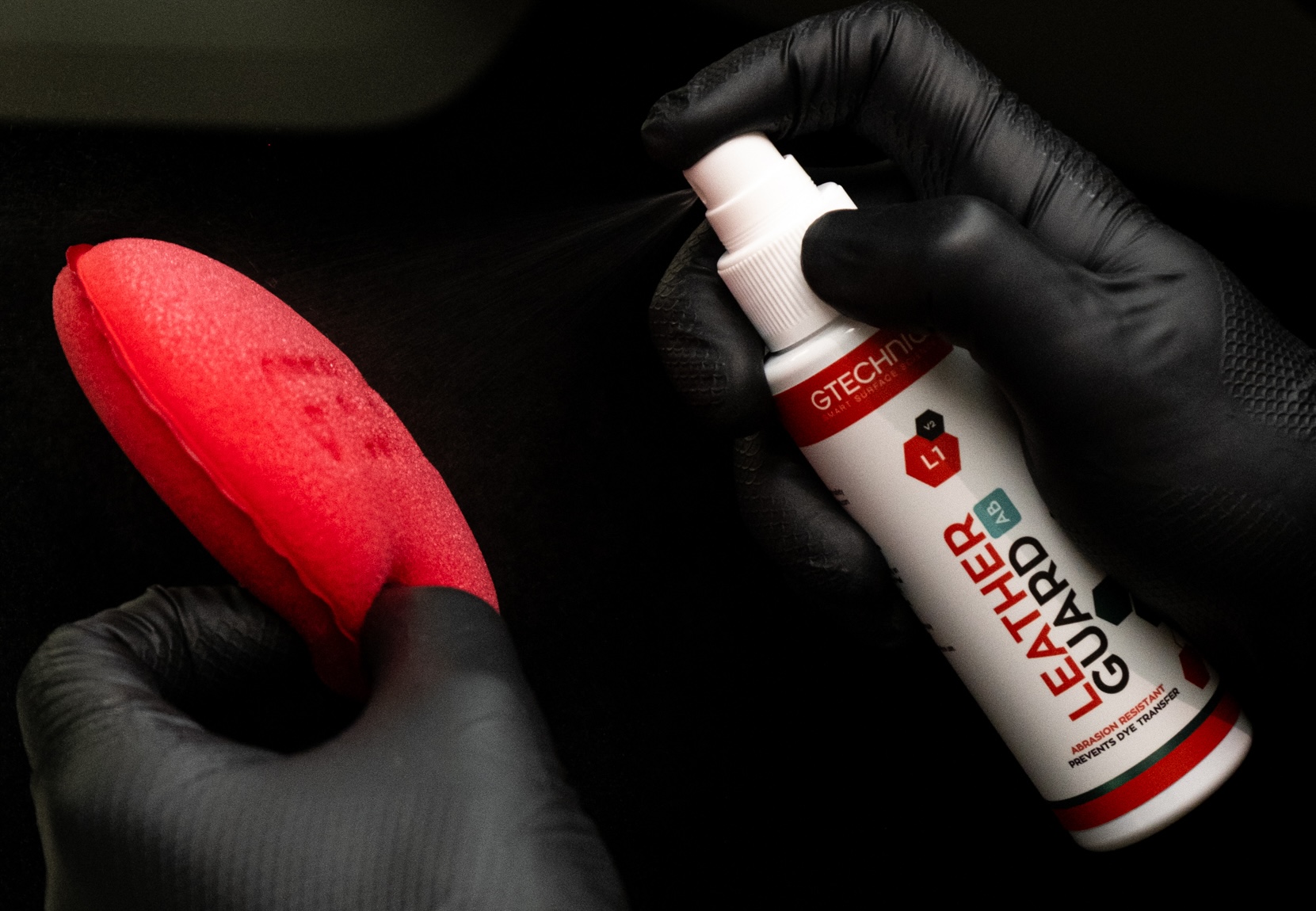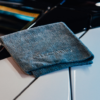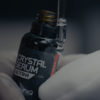Leather seats add a clean, upscale look to your car—but they don’t stay that way on their own. Daily use, sun exposure, and the occasional coffee spill can all wear them down over time.
The right care routine helps prevent fading, cracking, and stains without a ton of effort. Whether your seats are real or synthetic, light or dark, a few simple habits and the help of purpose-built solutions like Gtechniq’s leather care line, your seats can stay looking and feeling like new for years to come.
From identifying your leather type to building a low-maintenance care routine, here’s what it takes to keep your interior in top shape.
Understanding Automotive Leather Types
Modern cars typically feature one of three leather types:
- Full-grain leather: The highest quality, showing natural markings and developing a beautiful patina over time
- Corrected-grain leather: Sanded and treated to remove imperfections, common in mid-range vehicles
- Synthetic leather (leatherette): Increasingly popular in newer models, easier to maintain, but still requires protection
How can you tell what’s in your car? Check your owner’s manual or look for small imperfections and varying texture (signs of natural leather). Synthetic options feel more uniform and consistent throughout.
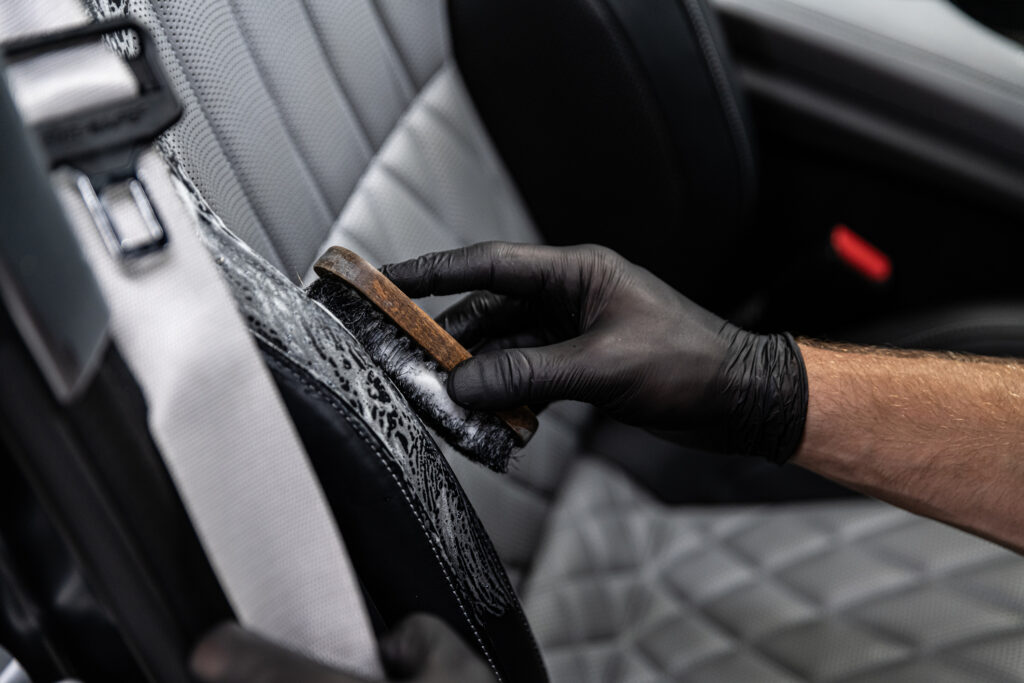 Common Threats to Leather Longevity
Common Threats to Leather Longevity
Your car’s leather interior battles four major enemies:
| Threat | Damage Caused | Protection Needed |
| UV Rays | Fading, drying, cracking | UV blocking protection |
| Daily Use | Wear on edges, scratches | Abrasion resistance coating |
| Spills & Stains | Discoloration, odors | Liquid-repellent barrier |
| Body Oils | Breakdown of leather fibers | Breathable protective layer |
Unlike furniture leather, car seats deal with a lot more—sunlight, heat, cold, and the daily wear of getting in and out. That kind of exposure calls for protection that’s made specifically for automotive leather.
Taking the time to care for it not only prevents fading and cracking, but also helps preserve your car’s overall value. A clean, well-kept interior makes a strong impression and can even boost resale value down the line.
Two-Step Leather Protection System
Step 1: Essential Leather Cleaning Process
Start with a clean surface: vacuum thoroughly, especially around seams and stitching, to remove dust and debris.
For routine cleaning (every 2–4 weeks), mix warm water with Gtechniq L2 Leather Cleaner and wipe the seats using a damp microfiber cloth in circular motions. Dry with a clean towel afterward.
If the seats are looking especially dirty (every 3–4 months), apply the cleaner directly to a cloth and work in small sections with light pressure, paying extra attention to high-use areas like the driver’s seat. Let surfaces dry completely before moving on.
Step 2: Creating Your Protective Barrier
Apply L1v2 Leather Guard after cleaning. Test first on an inconspicuous area.
For best results:
- Shake bottle well
- Apply to an applicator pad
- Use continuous spray if needed
- Create thin, even layers
Allow 1-2 hours curing time. Reapply every 6-12 months (3-6 months for convertibles). L1v2 shields against UV damage, liquids, and wear, maintaining your car’s interior in pristine condition.
Specialized Care for Light-Colored Upholstery
Light leather upholstery shows denim transfer and stains more easily. Here’s how to prevent problems:
- Apply L1v2 more frequently (every 4-6 months)
- Wipe down cream or tan seats weekly with a clean microfiber towel
- Address spills immediately with a damp cloth before they set
One customer with cream leather in a convertible had tried everything for blue jean stains. After properly cleaning and applying L1v2, not only did the transfer stop, but the seats were noticeably cooler to the touch when parked in the sun.
To learn more about cleaning your leather car seats, read our blog.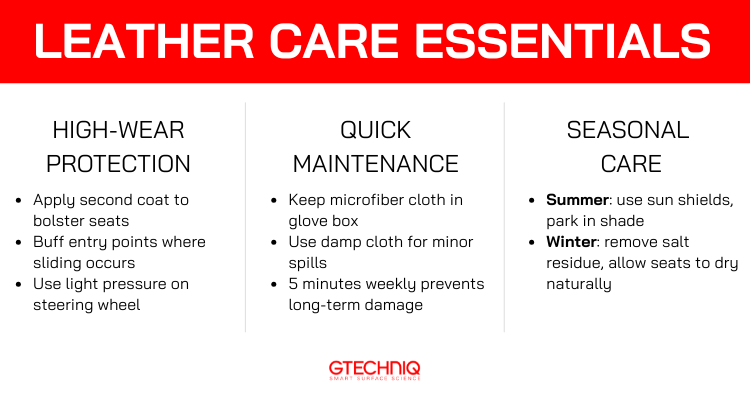
Protecting High-Wear Areas
The driver’s seat takes the most wear in any car. Apply a second light coat of L1v2 Leather Guard to the bolsters and buff the areas where you slide in and out. For older or drier leather, consider using a quality leather conditioner before applying protection. When cleaning touchpoints like the steering wheel, use gentle pressure to avoid rubbing down the surface over time.
If your vehicle sees daily use, touch up high-traffic zones like the driver’s seat every few months, even if the rest of the interior still looks good. It’s an easy way to stay ahead of visible wear and keep the entire cabin looking even.
Build a Maintenance Routine That Works
Small habits make a big difference. Keep a microfiber cloth in the glove box for quick dusting before particles can scratch. Wipe up spills with a damp cloth as soon as they happen, and always follow product directions to avoid over-wetting the leather.
Consistency is more important than using a ton of product. Just five minutes a week keeps grime from building up and saves you from major cleanup later.
Gtechniq Product Advantages
Gtechniq’s leather care line is built for real-world use. Lab-tested for abrasion resistance, L1v2 outperforms typical protectants by an average of 34%. It’s also antimicrobial, so it helps prevent odors—even in hot, humid conditions—and it dries to a clean, matte finish that won’t leave seats looking shiny or greasy.
Long-Term Leather Care Blueprint
Keeping leather seats in great shape doesn’t take much, just a little consistency. Start with quick weekly wipe-downs and visual checks, then work in monthly cleanings to prevent buildup. Reapply protection to high-use areas every few months, and once a year, give your seats a full reset with deep cleaning and fresh protection.
This four-part routine keeps your interior looking sharp, feeling comfortable, and holding its value over time. And with Gtechniq’s leather care products, like L2 Leather Cleaner and L1v2 Leather Guard, you’ll have the tools to make it all simple. A few minutes here and there now saves you from expensive fixes later, and keeps that clean, premium feel every time you get behind the wheel.
